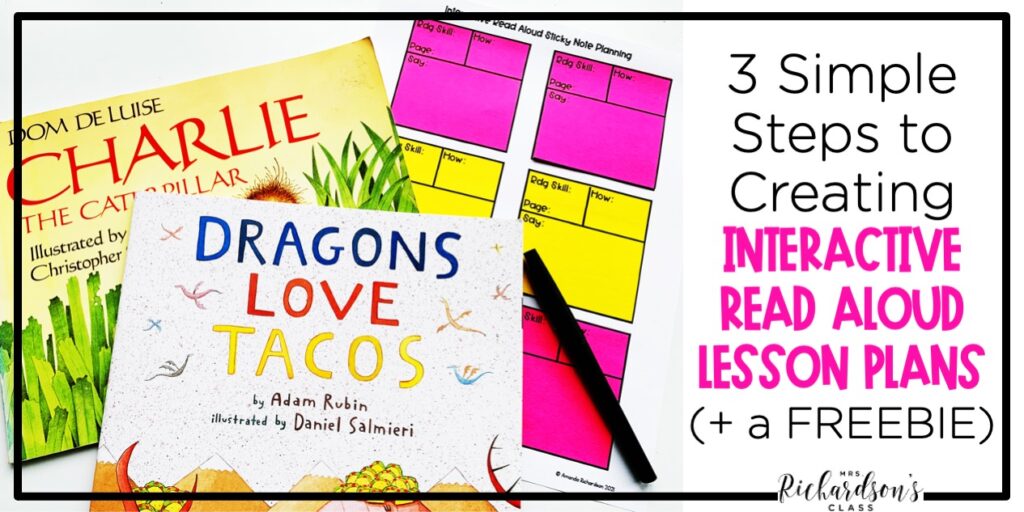
One of my favorite times of the day in the classroom was when we had our interactive read aloud! I loved having my students close to me on the carpet, their eyes and minds focused on the book we were reading. I loved picking out a book with vivid pictures and characters I thought they would love. But I also wanted to make that time purposeful and teach them a reading skill. How do we do that? By designing our interactive read aloud lesson plans ahead of time!

Taking the time to intentionally create your read-aloud lesson plans ahead of time elevates the effectiveness of your read aloud. When you plan it before you read it, you know the story, and you know what reading skills the book lends itself to.
Additionally, you are able to anticipate places where student comprehension might break down. Planning out your read aloud also allows you to be more purposeful and specific in what you are teaching your class both in person or teaching virtually.
I’ll admit sometimes it’s so easy to think, “Oh I have read this book so many times before, I could probably work on predicting with this story.” I would think and do this occasionally when I felt like I didn’t have the time to plan out my read aloud.
The problem with “winging it” is you aren’t clear exactly where to stop while reading, and you might not know what specific sentence stems you want to use. I ran into this time and time again. I found out the truth was I didn’t have time to not plan my read aloud.
You can read more about how planning makes your read aloud so much more powerful HERE in this blog post!
Not sure how to write great read-aloud lesson plans? Let me give you 3 steps to help you plan yours!
First, pick a book you want to read aloud to your class. This could be any book you are wanting to read to them. You are going to read through the book one time for enjoyment. After you finish reading the book, think about what reading skills the book naturally lends itself to.
You might have to go back through the story and look at a few places in the book. You will want to look for four to five places in the story where both you and your students could practice the selected reading skill.
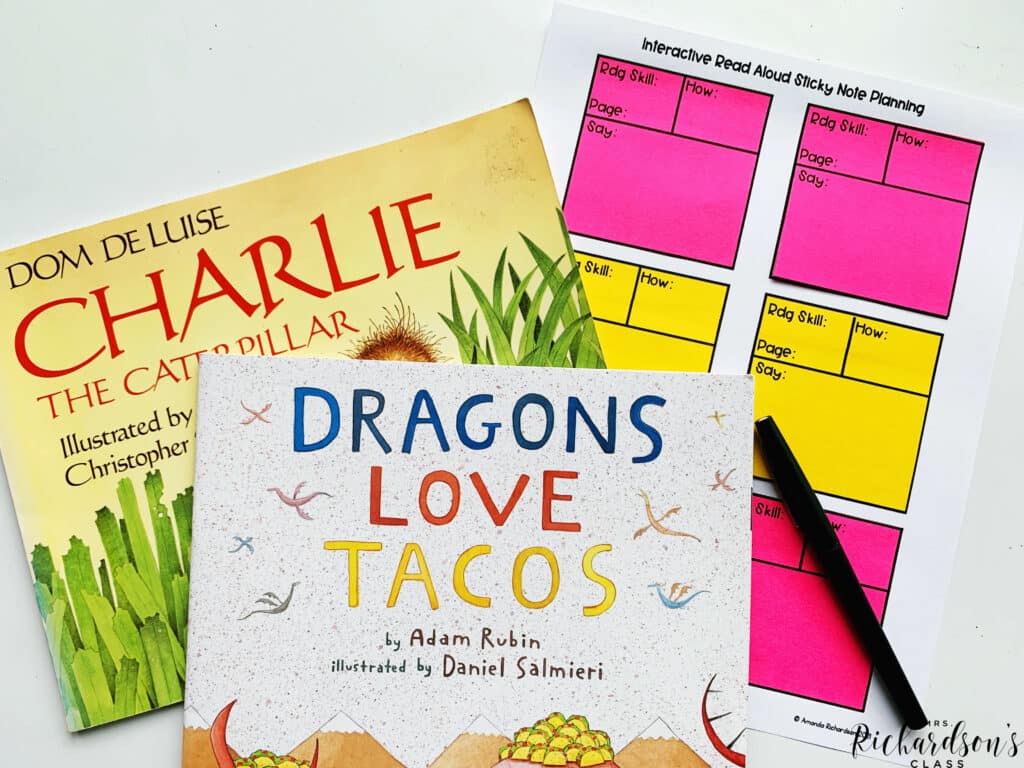
Now, it’s time to do the powerful work! Grab a pen and a sticky note. You are going to write down the reading skill you are teaching and how you will do it.
Put that information at the top. I also always put the page number in case the sticky note falls out of the book later on. If that happens, you know exactly where it goes for future use.
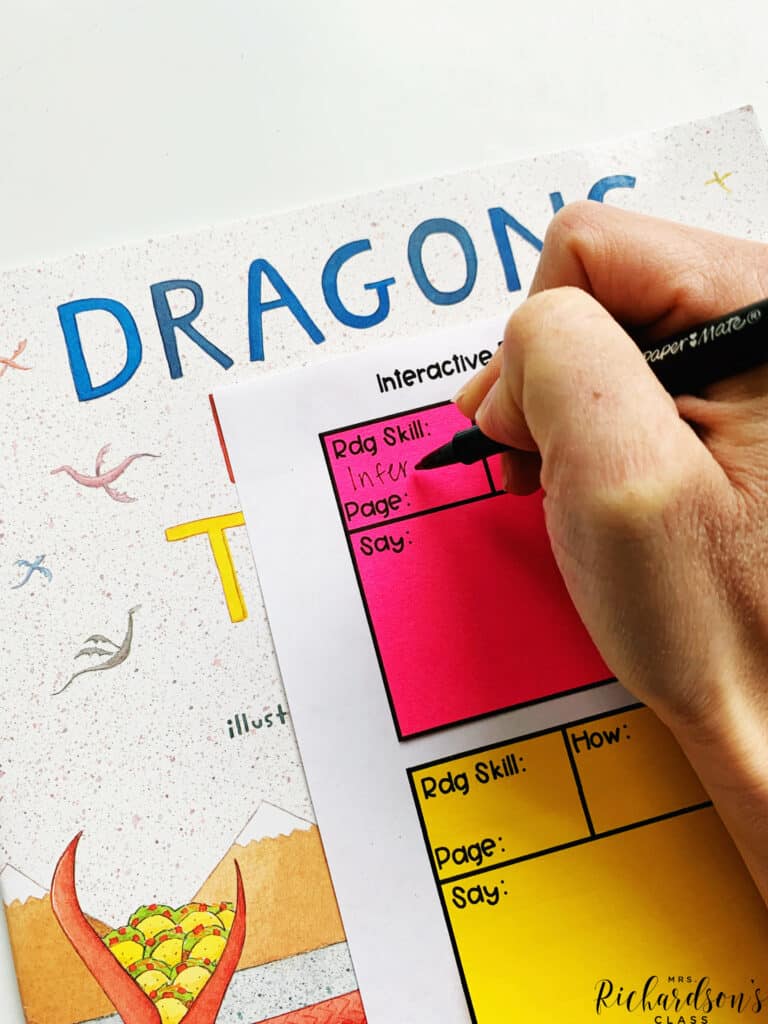
Then, in the middle of your sticky note, you are going to write what you will say. That way you won’t have to stop and think in the middle of your read aloud, what you want to say. It’s already there.
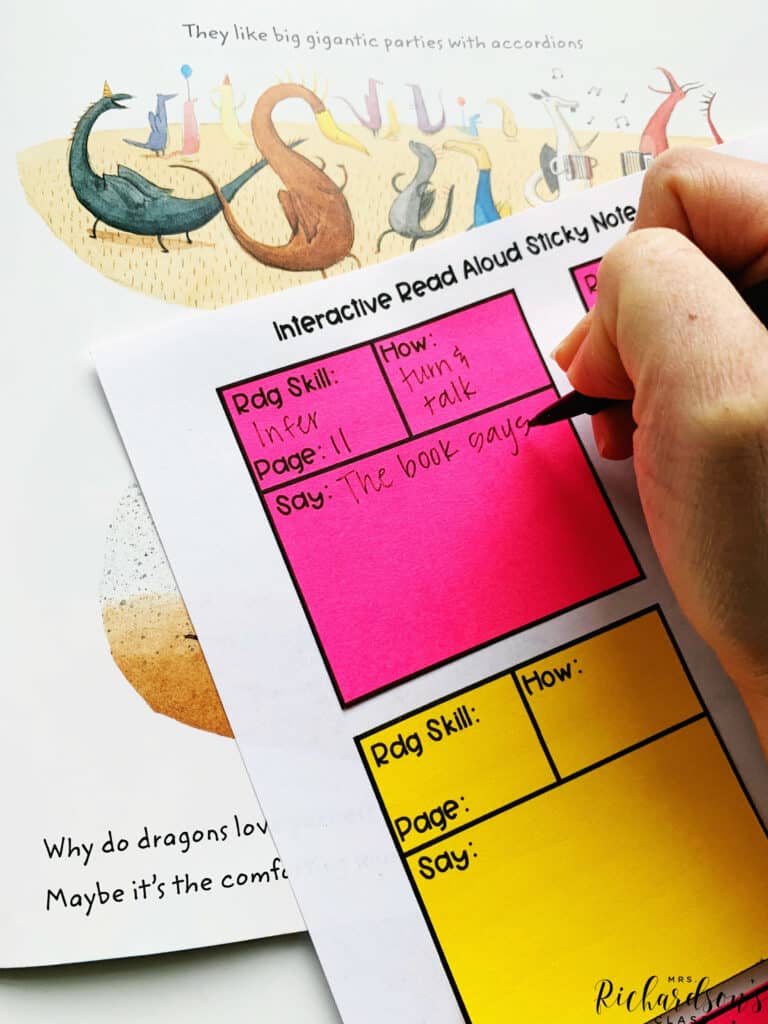
Here’s another example of what to write in the say portion: “Readers, let me tell you what I see in my mind here. I can see the boy and Jeremy having a good time. Also, I can see them talking, laughing, and having fun together. I can see them talking about what they want to do next. Thumbs up if you can see this too.”
Finally, go back into the story and put the sticky notes on the pages where you will work on those specific skills. You’ll want to stick them in a place where you aren’t covering up the text or pictures. That way you won’t have to move them later!
Want a free sticky note template to help you plan your read aloud? Here’s the format I used above to help plan my read alouds!
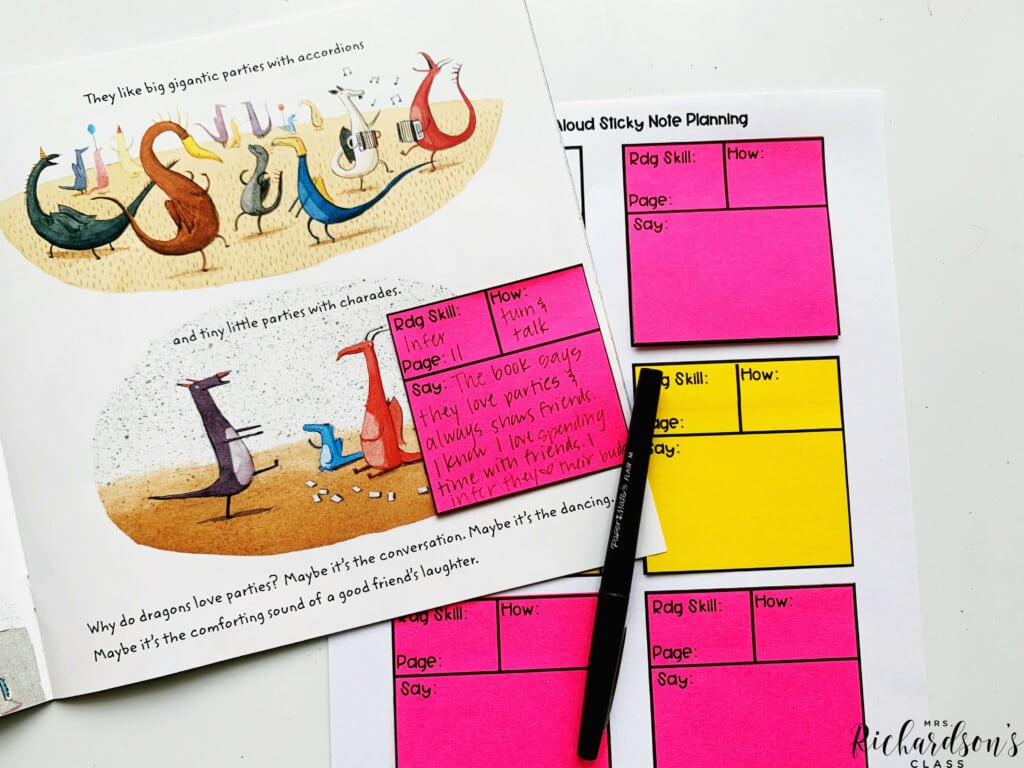
Another bonus tip: If you keep your sticky notes in the book, you will have this read aloud planned and ready to go for next year!

Not sure exactly how to teach questioning, making connections, or making predictions? Check out these blog posts for help:
Do you not have the time to plan a read aloud every day? Do you want interactive read aloud lessons that teach specific reading skills planned out for you? Not a problem! We have a growing bundle of interactive read alouds with planned lessons. It includes:
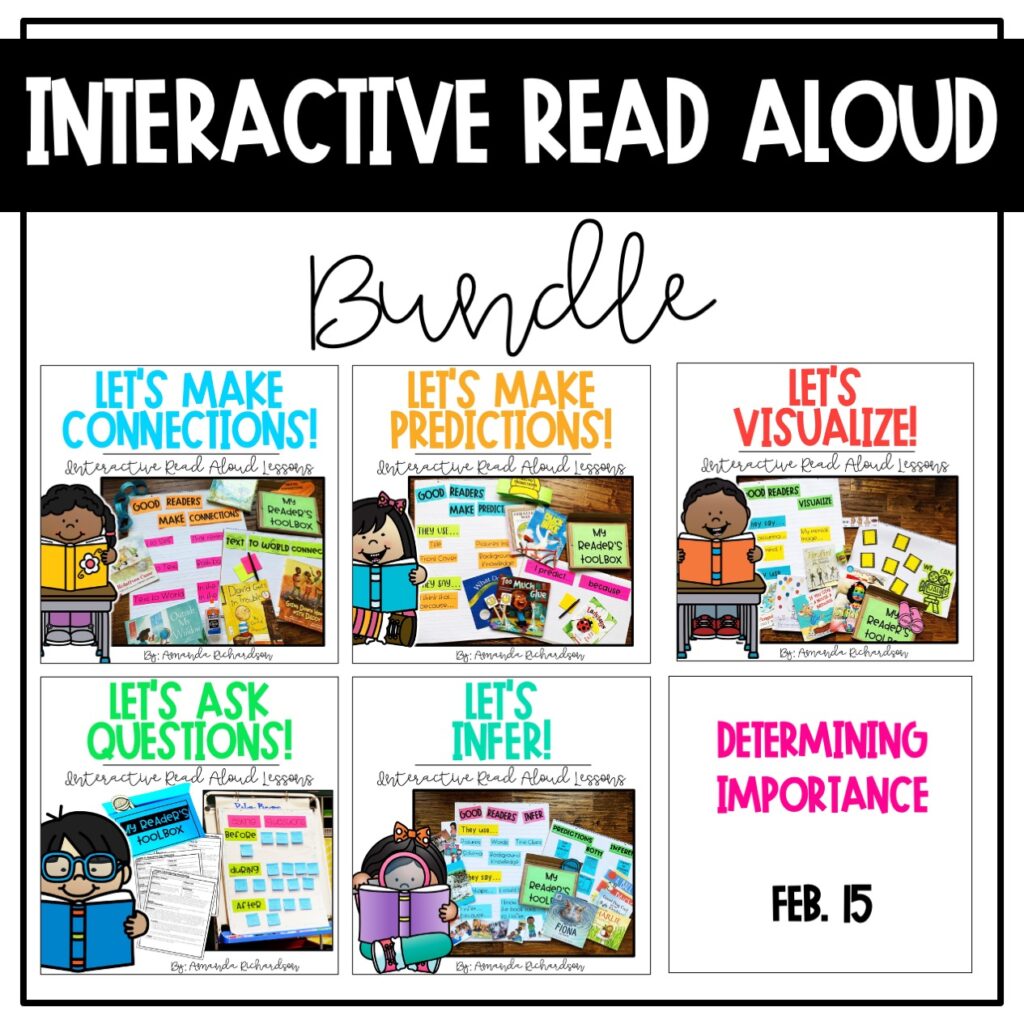
Grab yours today to be set for the year. Do you have any tips that help you save time on planning your interactive read alouds? I’d love to hear them!